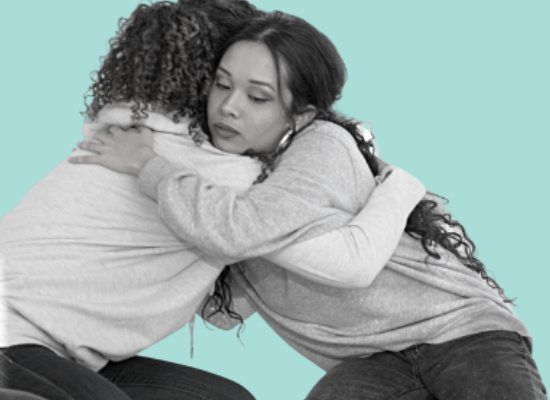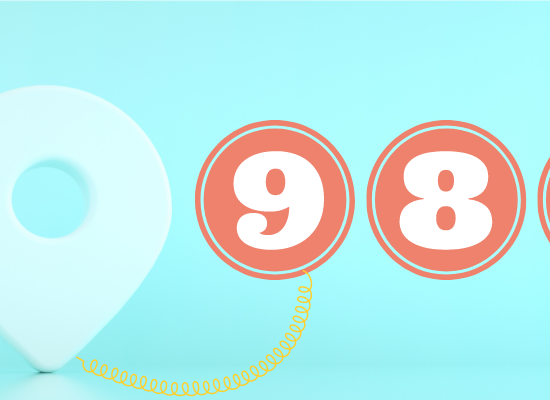
Stephanie Hepburn is a writer in New Orleans. She is the editor in chief of #CrisisTalk. You can reach her at .
When Congress amended the Communications Act of 1934, designating 988 as the nationwide three-digit number for the National Suicide Prevention Lifeline, the language focused on suicide prevention and mental health crises. The landmark National Suicide Hotline Designation Act became public law in October 2020. States across the United States quickly began putting together workgroups and proposing 988 implementation legislation.
Months earlier, in July, the Federal Communications Commission adopted rules requiring that all telecom carriers direct calls to 988 (the agency added text-to-988 in 2021) to the Lifeline by July 16, 2022. Ajit Pai, the FCC Chairperson, said in his remarks to the National Council for Mental Wellbeing’s Hill Day that the rules would “effectively establish ‘988’ as the ‘911’ for mental health emergencies.” However, advocates hoped the number wouldn’t just redesignate the hotline number from “800-273-8255” to “988” but help scaffold an interconnected crisis system, including the Lifeline call center hubs, mobile crisis teams, and crisis stabilization facilities.
Somewhere along the way, says Robert Morrison, people began calling 988 the three-digit number for suicidal, mental health, and substance use crises, with “behavioral health” as the umbrella term for all. The shift seemed more inclusive, and perhaps a natural evolution for 988 as communities further identified the needs of their residents and gaps in services. However, the National Suicide Hotline Designation Act doesn’t mention substance use disorders (nor behavioral health) and calls 988 “the national suicide prevention and mental health crisis hotline.”
Morrison, the executive director and director of legislative affairs at the National Association of State Alcohol and Drug Abuse Directors, points out that precision in legislative language matters. “Exact language benefits everyone because, on the backend, someone has to implement the statute and regulation.” However, he notes that when groups are an “add-on,” issues can arise. In September, Rebecca Boss, senior consultant at the Technical Assistance Collaborative, shared with #CrisisTalk that 988 offers an opportunity for parity. “Substance use disorders,” she said, “can’t be an afterthought in our approach to crisis care.” Boss is the former head of Rhode Island’s Department of Behavioral Healthcare, Developmental Disabilities, and Hospitals.
In addition to the Covid pandemic, the United States is experiencing an overdose epidemic, illustrating the need for a comprehensive crisis system. Between 2019 and 2020, overdose deaths jumped by 30%. The rise in 2021 was roughly half (14.9%); however, overdose deaths from synthetic opioids, psychostimulants, and cocaine have continued to spike. In May, SAMHSA announced nearly $1.5 billion in State Opioid Response grant funding opportunities for states and territories to close the treatment gaps. In a press release, Xavier Becerra, the U.S. secretary of health and human services, said, “At this time, less than 1 out of 10 people in the United States who need addiction care get it.” The funding will help ensure people have access to a full continuum of care, including “prevention, harm reduction, treatment, and long-term recovery supports.”
State leaders and legislators are increasingly aware that 988 crisis systems must fit all populations and their specific needs, including those with co-occurring substance use challenges or intellectual and/or developmental disability. However, notes Morrison, inclusion in legislative language is a vital step in ensuring that people do get the care they need. When language is vague, communities are left to determine who it includes and who it doesn’t. That can result in them falling back on long-held preconceived notions and constructs. For example, in March, Mary Sowers told #CrisisTalk there’s a presumption in the U.S. that a person with IDD can’t have co-occurring mental health support needs, contributing to their “exclusion from consideration” as communities have built and expanded their crisis systems. She’s the executive director of the National Association of State Directors of Developmental Disabilities Services.
For parity to transpire, Morrison says legislators must deliberately build in language that explicitly includes these groups. “When it comes to the end-user, the intent of what the statute seeks to identify and address must be clear.” So, for example, if 988 legislation includes substance use and IDD crises, it should say so. Also, umbrella terms like behavioral health, points out Morrison, muddy the waters because they can have divergent meanings to different groups, leaving room for guesswork and exclusion. “You solve the problem by being precise and saying the actual terms and issues you’re seeking to address.”
Furthermore, the lack of explicit inclusion opens the door for continued inequity. Not only in legislation but also in the workgroups and coalitions that develop the 988 framework and implementation. “In this case, the bill started with a focus on suicide,” says Morrison, “which made sense.” “Sometimes, there’s a desire to do everything all the time, each time.” However, when it expanded, he notes that no substance use disorder advocacy organizations were involved in the workgroups or coalitions informing the legislation. “Because they weren’t included, they weren’t there to help build the language, and as a result, some states haven’t interpreted the 988 rollout to have a strong SUD component.”
For a 988 crisis system to be comprehensive, Morrison points out that people with substance use disorders can’t just be thrust into a framework without careful consideration of their unique needs. For example, there are mental health mobile crisis services and stabilization facilities that continue to reject people who are intoxicated. And vice versa, substance use treatment facilities might reject a person experiencing suicidal ideation. To fulfill the “no wrong door” approach in SAMHSA’s National Guidelines for Behavioral Health Crisis Care, Boss told us that crisis providers must integrate substance use treatment and expertise. That includes the ability to dispense medication for opioid use or other substance use disorders. “Our crisis providers need to be able to handle both mental illness and substance use disorders,” she said.
Across the U.S., the State Opioid Response grant program has helped substance use disorder treatment facilities expand their capabilities to meet community needs. For example, Morrison points out that the grant has allowed the Charleston Center to develop beyond “a place to go” and include staff that provide screenings, medical treatment, and peer support. “It’s a trauma-informed, whole-person approach,” he says. Tony Sanchez, the director of Partnerships at Faces and Voices of Recovery, told us in April that early peer involvement could alter the life trajectory of a person experiencing a substance use disorder crisis. “We should introduce a peer at the beginning,” he said. That might be the moment right after a doctor saves a person’s life with Naloxone or when a new mother in labor and delivery tests positive for opioids. “Offering support instead of criminalizing them allows people to return to their lives.”
Proposed legislation like the bipartisan 988 Implementation Act of 2022—sponsored in the House by Rep. Tony Cárdenas, Democrat of California—has worked to rectify the gaps in previous 988 legislation. Earlier this year, psychiatrist Eric Rafla-Yuan, an American Psychiatric Association Jeanne Spurlock Congressional Fellow in Cárdenas’ office, reached out to Morrison. (#CrisisTalk interviewed Rafla-Yuan on the Freedom House model in 2021.) “They wanted support for the legislation,” says Morrison. Initially, the draft bill used the term behavioral health but didn’t explicitly include substance use disorders. Together, Cárdenas’ office and Morrison and his staff went through the proposed text to ensure the language was specific and inclusive. As a result, the bill explicitly includes substance use disorder crises, providers, services, supports, and organizations. In addition, under the crisis response continuum of care section, the bill states the system must have the capacity to meet the needs of diverse patient populations who might experience a mental health or substance use emergency. That includes:
“Children, families, and all age groups, cultural and linguistic minorities, individuals with co-occurring mental health and substance use disorders, individuals with cognitive disabilities, individuals with developmental delays, and individuals with chronic medical conditions and physical disabilities.”
“It might be lengthier to list out what populations a law covers,” points out Morrison, “but clarity matters more.” He says it goes back to inclusion and building a crisis system designed for everyone.









